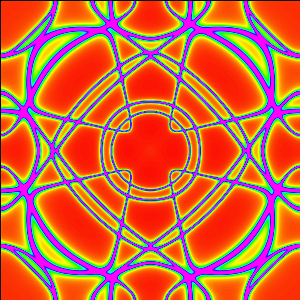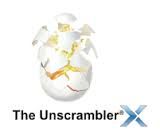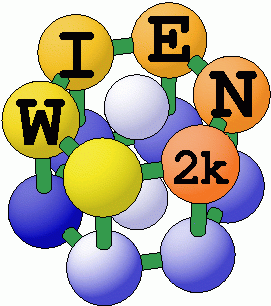Software

Quanty
Quanty is a script language which allows the user to program quantum mechanical problems in second quantization and when possible solve these. It can be used in quantum chemistry as post Hartree-Fock or in one of the LDA++ schemes. (self consistent field, configuration interaction, coupled cluster, restricted active space, ...) The idea of Quanty is that the user can focus on the model and its physical or chemical meaning. Quanty takes care of the mathematics.
REFTIM
The program REFTIM calculates and fits the time spectra of nuclear resonant reflectivity, delayed and prompt reflectivity curves and the corresponding conversion electron Mössbauer spectra (CEMS) for any multilayer structure containing 57Fe, 151Eu, 149Sm, 119Sn or other isotopes if they have M1 Mössbauer transition. The experimental details of the nuclear resonance scattering technique with synchrotron radiation are described in the ID18 beamline Web pages.

SPR-KKR
The SPRKKR band structure package allows to calculate the electronic structure of arbitrary 3-D periodic systems, including systems with chemical disorder. The treatment of 2-D periodic systems (e.g. surfaces) can be done at the moment only by using an auxiliary system having three dimensional periodicity or by making use of the cluster approximation. The electronic structure calculation can be done in a non-relativistic, scalar-relativistic as well as fully relativistic mode. In the scalar-relativistic mode paramagnetic as well as spin-polarized systems can be treated, including non-collinear spin structures and arbitrary spin spirals. In the fully relativistic mode, paramagnetic as well as spin-polarized systems with an arbitrary spin configuration can be dealt with. On the basis of the electronic structure calculation, many different properties can be investigated with a strong emphasize on response functions and spectroscopic properties.

Unscrambler X
Commercial software product for multivariate data analysis, used for calibration of multivariate data which is often in the application of analytical data such as near infrared spectroscopy and Raman spectroscopy, and development of predictive models for use in spectroscopic analysis of materials. Unscrambler X was an early adaptation of the use of partial least squares (PLS). Other techniques supported include principal component analysis (PCA), 3-way PLS, multivariate curve resolution, design of experiments, supervised classification, unsupervised classification and cluster analysis.

VASP
VASP is an ab initio simulation package based on DFT. It is used for atomic scale materials modelling, e.g. electronic structure calculations and quantum-mechanical molecular dynamics from first principles. VASP computes an approximate solution to the many-body Schrödinger equation, either within density functional theory (DFT), solving the Kohn-Sham equations, or within the Hartree-Fock (HF) approximation, solving the Roothaan equations. Hybrid functionals that mix the Hartree-Fock approach with DFT are implemented as well. Furthermore, Green's functions methods (GW quasiparticles, and ACFDT-RPA) and many-body perturbation theory (2nd-order Møller-Plesset) are available. Central quantities, like the one-electron orbitals, the electronic charge density, and the local potential are expressed in plane wave basis sets. The interactions between the electrons and ions are described using norm-conserving or ultrasoft pseudopotentials, or the projector-augmented-wave method. To determine the electronic ground state, VASP makes use of efficient iterative matrix diagonalisation techniques, like the residual minimisation method with direct inversion of the iterative subspace (RMM-DIIS) or blocked Davidson algorithms. These are coupled to highly efficient Broyden and Pulay density mixing schemes to speed up the self-consistency cycle.

WIEN2k
The program package WIEN2k allows to perform electronic structure calculations of solids using density functional theory (DFT). It is based on the full-potential (linearized) augmented plane-wave ((L)APW) + local orbitals (lo) method, one among the most accurate schemes for band structure calculations. WIEN2k is an all-electron scheme including relativistic effects.
XRMC
XRMC is a Monte Carlo program for accurate simulation of X-ray imaging and spectroscopy experiments in heterogeneous samples. The use of the Monte Carlo method makes the code suitable for the detailed simulation of complex experiments on generic samples. Variance reduction techniques are used for reducing considerably the computation time compared to general purpose Monte Carlo programs. The program is written in C++ and has been tested on Linux, Mac OS X and MS Windows platforms. XRMC is released under the terms of the GPLv3.
- ← Previous
- 1
- 2
- Next →

